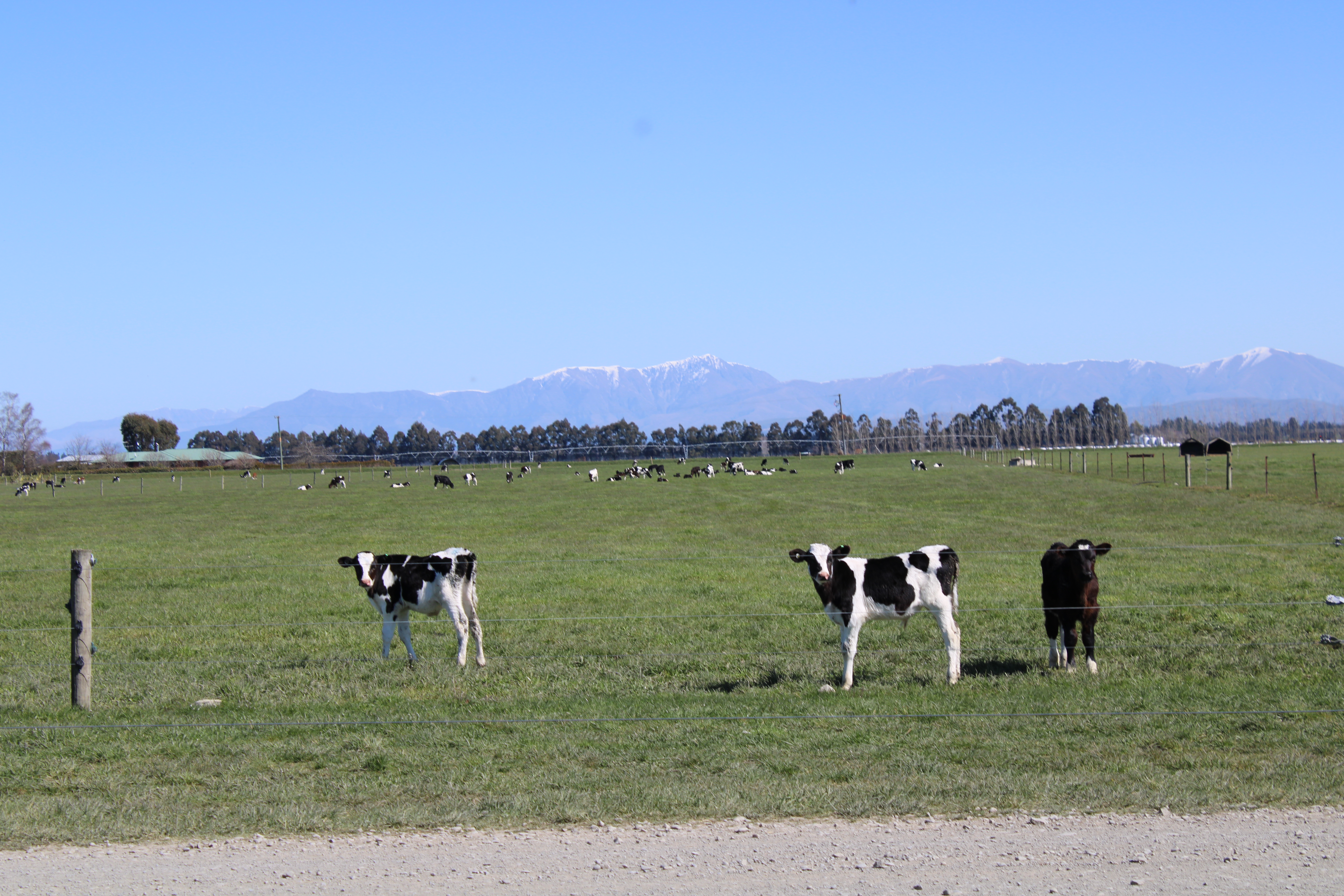Friesian bull calves reared on a once a day (OAD) milk replacer feeding system at a large-scale unit are achieving average daily liveweight gains of 1kg in their first 10 weeks of life.
Dr. Amanda Dunn, of Bonanza Calf Nutrition, visited the unit in Methven, in the Canterbury region of New Zealand, to learn how calf selection, attention to detail at feeding, early weaning and a simple system were key to success at this 2,000-calf unit.
Contracts for Friesian bulls are pre-arranged and selection is based primarily on colour – all calves must have a white forehead and white legs; they arrive at the unit when they are four days old and weighing less than 35kg.
‘A vital feed’
The owner and main calf rearer, Katrina Glass, has been purchasing from the same farms for the last 12 years and has built up a good relationship with the farmer suppliers; they understand her requirements in terms of colostrum intakes and calf condition.
“Keeping track of the source of calves is important for Katrina as she can look at any trends in lack of feed training, weakness, morbidity and mortality,’’ said Dr. Dunn.
Calves that have not received adequate colostrum are rejected.
“Colostrum is a vital feed to provide calves with their first source of nutrients and immunity,’’ Dr. Dunn explained.
“Calves that do not receive adequate levels at the correct timing after birth will struggle greatly in terms of their health and lifelong performance.’’
Upon arrival, calves are housed in pens of 12 on sawdust bedding – this is sprayed with disinfectant every time a pen is emptied.
From the day after they arrive, calves are fed milk replacer at a lukewarm temperature once daily at a rate of approximately 450g/calf/day.
At 10 days-of-age, calves are grouped in mobs of 48 and turned out to grass when they are fed 450g of milk replacer/head using a 60-teat trail feeder and 20% crude protein concentrate ad-lib.
Calves are consuming 0.5kg pellets when they are three weeks old. They will eventually be eating up to 4kg of concentrate per head when they are approaching 100kg; each calf consumes approximately 70kg of concentrate during their time at the unit.
‘A key role to play’
Feeding such a high level of concentrate at grass is uncommon in a New Zealand based system but Katrina strives to meet targets using this feed method.
“She is confident that it has a key role to play in calves achieving their growth rate targets. Concentrates, along with grass, will greatly encourage rumen development in these young calves,’’ said Dr. Dunn
Calves are weaned when they hit a target of 65kg at approximately six weeks-of-age.
At 1.3%, the mortality level is very low, with most losses occurring within the first four days.
Calves are weighed regularly, which Katrina regards as key since she only has a very short rearing window.
“It is crucial that weight is monitored to ensure targets are met to make it as efficient as possible,’’ said Dr. Dunn.
Dehorning and vaccination take place simultaneously to make the groups easier to manage and to help calves successfully reach their targets.
At 939mm/year, annual average rainfall in Methven is similar to Ireland and the temperature ranges from 3º to 10º during September, which is spring in New Zealand and equivalent to March in Ireland.
“He stated that OAD milk feeding is most popular with calf rearers because it is a minimal cost system with minimal labour to successfully achieve target 100kg weight,’’ said Dr. Dunn.
Curding of milk is key to the success of the system, his research showed.
“Calves can be weaned early without stress to the system as their rumens develop early; calves can easily consume 1.5kg of concentrates at 5-6 weeks-of-age and grazing grass,’’ said Dr. Dunn.
“Paul commented that calves can be weaned from five weeks after date of arrival using a target weight gain of approximately 20kg during the milk feeding period and that they are eating concentrates. On twice daily milk feeding systems, calves are often not weaned until they are 10 or 11 weeks-of-age.’’
Find out more
For more information on Shine Once-a-day milk feeding, go to: www.bonanzacalf.ie; or simply click here



